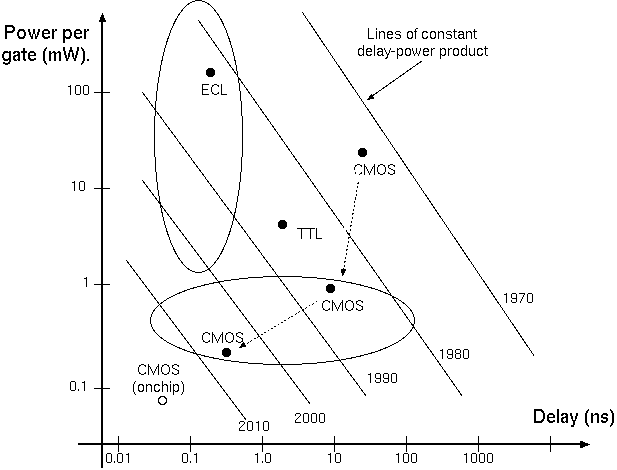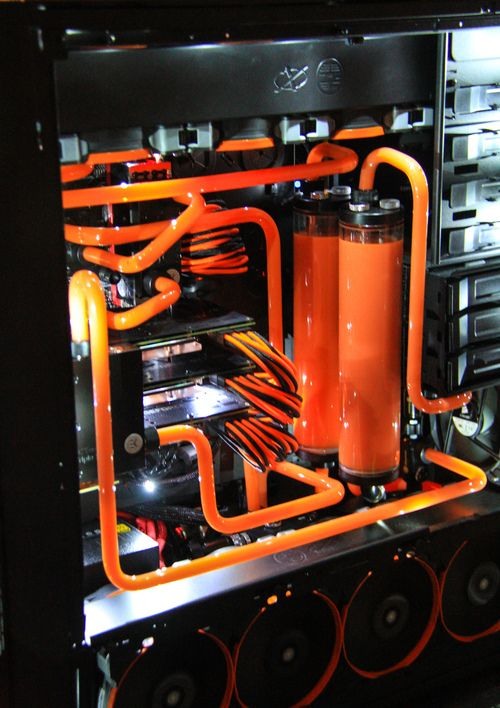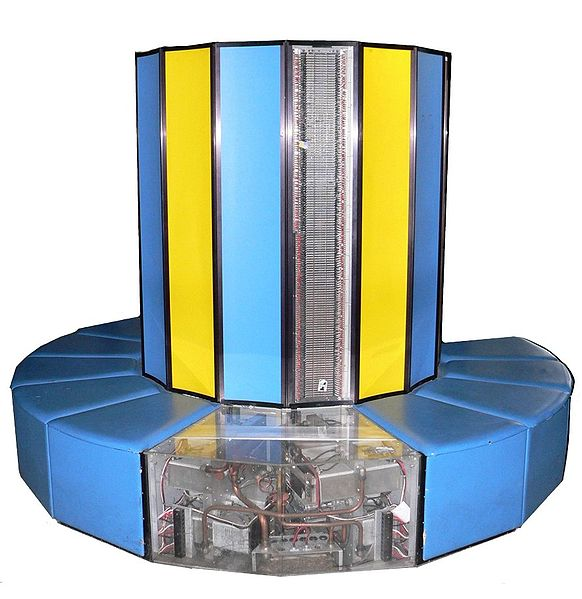
Historic energy used when a discrete NAND2 gate switches: delay-power product.
Total consumption = Gate Power + Wiring Power.

Gate switching speed is dominated by electron mobility (drift velocity) in transistor gates. Gate intrinsic energy used to be the main power consumer.
Historically, for a given technology, the product of delay and power consumption of a gate was largely constant, leading to design trade offs. Units of the product are the Joule: the energy for a logic transition in a gate.
We can improve by shifting to faster materials, such as GaAs, or just by making the gates smaller and the wires shorter.
How small can we go: what is the silicon end point ? Unanswered still!
But for modern designs, wiring power owing to capacitance is the main obstacle to performance (unless we return to water cooling again). (Remember, in reality the 'wiring power' is mostly dissipated in the gates, but the nets also have resistance.)


| 9: (C) 2008-16, DJ Greaves, University of Cambridge, Computer Laboratory. |